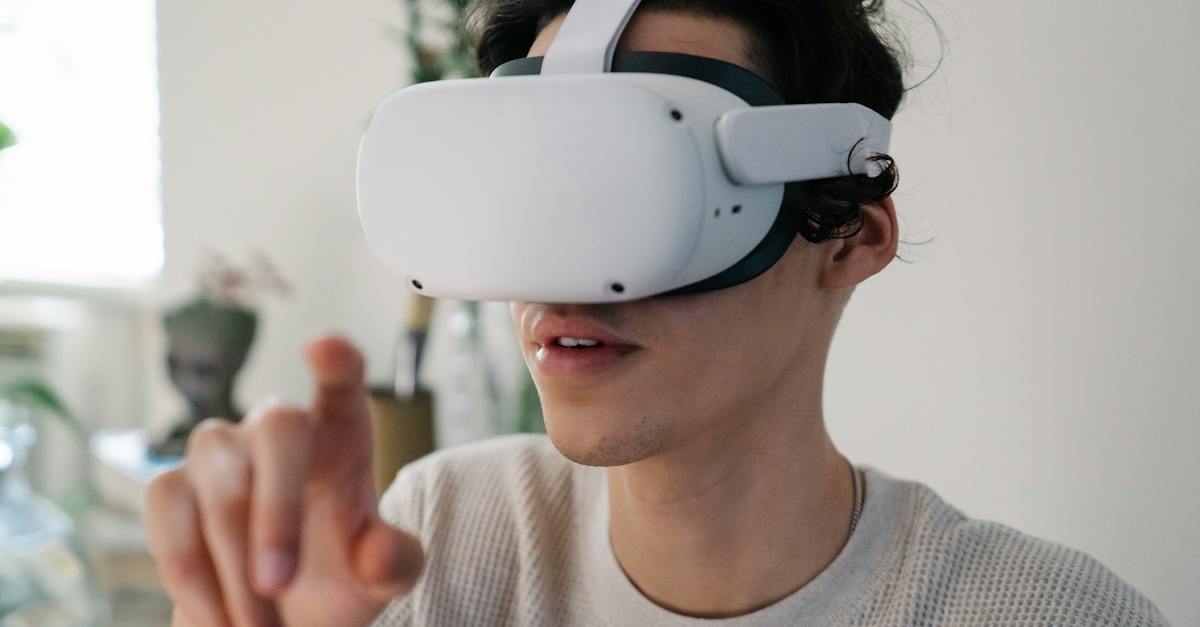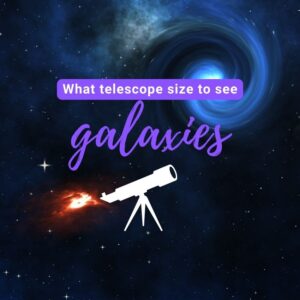This site contains affiliate links to products. I may receive a commission for purchases made through these links.
I’ve always been a stargazing enthusiast, and if you’re reading this, chances are you’re one too. But have you ever thought about how augmented reality (AR) could potentially enhance your stargazing experience?
AR technology isn’t just for video games and shopping apps. It’s making its way into the world of astronomy, and it’s transforming how we interact with the night sky. With the help of AR, we’re no longer limited to what our naked eye or even a telescope can see.
Imagine pointing your smartphone at the sky and getting real-time, detailed information about the celestial bodies you’re looking at. That’s the power of AR in stargazing. Stay with me as we delve deeper into this fascinating topic and explore how AR can take your stargazing experience to a whole new level.
How Augmented Reality is Transforming Stargazing
When I first discovered augmented reality (AR) technology’s possibilities in astronomy, I was intrigued to say the least. This tech isn’t just for video games or shopping apps: it’s an immersive, educational tool redefining our relationship with the cosmos.
Point your smartphone at the night sky, and you’re met with a rich, interactive experience. Through AR, detailed information about the celestial bodies above is presented in real-time, directly on your device’s screen. Want to know more about that twinkling star right there? Just point, focus, and learn.
AR technology is proving to be a game-changer in the world of astronomy. One remarkable aspect it brings to the table is its potential for education. I remember times when identifying constellations and planets could be challenging. Nowadays, children and adults alike can simply use an AR smartphone app to learn about the universe around us.
Additionally, AR provides unprecedented opportunities to engage with celestial events. Take the recent events of solar and lunar eclipses, for example. I recall being patiently hunkered down with my telescope, squinting into the eyepiece for a blurry view. With AR, there’s another option. Now, we can view these fascinating phenomena with astonishing detail, all without needing special viewing equipment.
Moreover, AR is opening doors to a whole new world for amateur stargazers. It’s not always easy to get outside and stargaze. Urban environments, bad weather, and light pollution all play a part in reducing visibility. Yet, with AR’s capabilities, these obstacles are minimized, allowing everyone to explore the mysteries of the universe.
Here’s a fun tidbit for stargazers. The well-known star, Vega, is approximately 25 light years away. Think about this: Through AR, you can learn its current status in real-time. It’s an incredible leap forward, reminding us just how much potential there is in the blend of technology and astronomy.
As you can see, AR has already started to change stargazing for the better. But it’s clear that this is only the beginning. With continuous advancements in AR, the blend of real and digital is sure to take our astronomical adventures to the next level.
The Power of AR in Enhancing Celestial Observations
As we probe deeper into this topic, it’s difficult to overlook the sheer potency of Augmented Reality (AR) when it comes to elevating our cosmic spectating. A primary issue many stargazing enthusiasts, astronomers, and educators alike face is the nebulous concept of spatial awareness. Traditional stargazing methods, while awe-inspiring, often lead to disorientation and confusion due to the lack of a three-dimensional frame of reference. But breathe easy astronomy enthusiasts! This is where AR swoops in to rectify this vexing problem.
AR enables users to pinpoint the position of stars, planets, constellations, and even galaxies with surprising accuracy. By overlaying astronomical data onto a live-view of the sky, learners can easily understand and visualize their relative position in the cosmos. The element of interactivity provides a hands-on experience and fosters active learning, nurturing a deeper connection between the observer and the celestial entities. To put it into perspective, it’s like having your own personal planetarium in your pocket!
Let’s take a quick peek at how AR has the potential to revolutionize our stargazing experience.
| Benefits | Description |
|---|---|
| Spatial Awareness | AR provides a 3D view of celestial bodies enhancing spatial understanding. |
| Interactivity | Enables users to directly engage with celestial information boosting active learning. |
| Convenience | Transforms any location into a personal planetarium. |
With frequent tech advancements, AR is rapidly evolving. Cutting-edge AR-driven astronomy applications offer plethora of features, from tracking satellites in real-time to predicting upcoming celestial events. AR also breaks down geographical barriers. Regardless of the weather or light pollution in your area, AR can bring galaxies right at your doorstep.
In this digital age, when the line between real and virtual is continuously blurring, AR has undoubtedly emerged as a gamechanger. It’s paving the way for a metamorphosed stargazing experience – an experience potentiality only limited by the power of imagination. Undeniably, AR presents a new horizon to explore, a horizon that will constantly redefine our interaction with the celestial world.
Exploring the Night Sky with Augmented Reality
Imagine standing in an open field, or perhaps even the comfort of your backyard, with the entire cosmos at your fingertips. This is not just a fantastic futuristic scenario – it’s the reality of today, thanks to augmented reality (AR).
AR Technology is an integral player in redefining how we interact with the cosmos. Traditional stargazing required extensive knowledge, patience, and expensive equipment. But with AR, even the most casual observers can explore the celestial wonder in an unprecedented manner.
“Stargazing and AR align seamlessly. Instead of searching aimlessly, AR guides your gaze, you can pinpoint constellations, stars, planets, and galaxies with an accuracy previously unattainable.”
Let’s take the benefits a notch higher. Ever wanted to track real-time movements of the International Space Station or predict impending celestial events? Look no further than AR! With AR’s rapid technological advancements, such possibilities are well within the realm of not just practical, but also entertaining.
Using AR applications, you can transform any location into a personal planetarium. No need for special arrangements or traveling great distances. Whether you’re sitting in a city apartment or camping in a rural outdoors, stargazing is just a smartphone away.
AR Fosters Active Learning
Apart from the fun factor, AR is a shining tool for educational purposes. With its interactive and immersive environment, AR hands-on experience is a breath of fresh air in the conventional education methods. Learners can connect with celestial bodies on a deeper, more personal level. It’s no longer about memorizing facts or data but understanding and experiencing the depth and mystery of our cosmos.
The power of AR lies in its immersive, interactive capabilities that make the learning experience engaging and memorable. It’s a revolution in the realms of both astronomy and education, transforming every stargazing session into a personal journey of cosmic exploration.
Benefits of Using AR for Stargazing
This revolutionary technology comes with numerous advantages, opening up an entire universe for you to explore.
Engaging Learning Environment
The interactivity offered by AR transforms stargazing into a dynamic, learning experience. Detailed and interactive star maps stimulate curiosity and encourage active learning. Instead of simply observing, you’re plunged into an immersive environment where you can virtually touch constellations, planets, and galaxies. It’s like having a personal tutor to guide you through your cosmic journey.
Enhanced Spatial Awareness
AR makes understanding complex celestial concepts a breeze. It gives you a three-dimensional (3D) perspective, enhancing spatial awareness. You can see stars in the relative distance, see the Earth’s movement around the sun, or witness a comet streaking through the sky.
Real-Time Satellite Tracking and Event Prediction
The advanced AR features not only allow you to track satellites in real-time but also predict celestial events. Knowing the exact time and location of an upcoming solar eclipse or meteor shower can enhance your stargazing experience to a whole new level.
Easy Accessibility and Convenience
Regardless of your location, AR turns any place into a personal planetarium. You don’t need to worry about light pollution or bad weather. Whether you’re in the heart of a bustling city or your own backyard, with AR, the cosmos is always at your fingertips.
Take note of the table below summarizing benefits of AR in stargazing:
| Benefits | Descriptions |
|---|---|
| Engaging Learning | Interactive 3D star maps for a dynamic learning experience. |
| Enhanced Spatial Awareness | 3D perspective for a comprehensive view of celestial bodies. |
| Real-Time Satellite Tracking and Event Prediction | Advanced features for tracking and predicting celestial events. |
| Accessibility and Convenience | Transforms any location into a personal planetarium. |
So, it’s evident that AR isn’t just reshaping the way we learn about our celestial neighbors, it’s revolutionizing our entire stargazing experience. Going forward, we’ll delve into the popular AR stargazing apps that can turn your device into a gateway to the stars.
Conclusion
So there you have it. Augmented reality is changing the game for stargazing enthusiasts and casual observers alike. It’s bringing the cosmos to our fingertips, making space exploration more interactive, engaging, and accessible than ever before. With AR, we’re not just looking at the stars, we’re virtually touching them, tracking satellites in real-time, and even predicting celestial events. It’s like having a personal planetarium right in your pocket. As we move forward, I’m excited to see how AR continues to enhance our stargazing experiences and can’t wait to delve deeper into the world of AR stargazing apps. The sky’s not the limit when it comes to AR and stargazing – it’s just the beginning.
What are the key benefits of using augmented reality (AR) for stargazing?
Augmented Reality (AR) offers various advantages for stargazing. It creates an interactive learning environment with star maps and enables users to virtually interact with constellations, planets, and galaxies. Furthermore, AR facilitates a three-dimensional perspective of celestial bodies, enhancing spatial awareness. It also monitors real-time satellite activity and predicts celestial events while also providing a personalized planetarium experience anytime, anywhere.
How does AR revolutionize stargazing?
AR revolutionizes stargazing by leveraging technology to make the experience more immersive and interactive. It transforms any location into a personal planetarium, allows virtual interaction with celestial bodies, and offers real-time tracking and prediction of satellite movement and celestial events.
What is the role of AR in enhancing spatial awareness in stargazing?
AR enhances spatial awareness by providing a three-dimensional view of celestial bodies. It allows users to comprehend the relative positions and distances of constellations, planets, and galaxies more effectively, thereby significantly improving their spatial understanding.
Can AR predict celestial events?
Yes, AR possesses features that allow it to predict celestial events. By tracking satellites in real-time, AR can alert users about forthcoming celestial events like meteor showers or eclipses, specifying the exact time and place of their occurrence.
Can I use AR for stargazing from any location?
Yes, one of the main conveniences of AR is its capacity to transform any location into a personal planetarium. This means you can enjoy an interactive stargazing experience from your backyard, rooftop, or even your living room.




